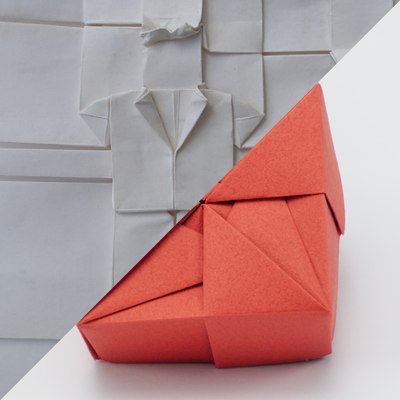Two Kinds of Origami Models

I recently realized that without planning it that way, I have been designing two kinds of models. The first kind are models which push the boundaries of what I can do, usually challenging, and, at least to some degree, novel. The second are more typical, often also interesting, but not quite as exciting. I would love to design more of the first kind, but end up making many more of the second.
Models of the first kind are what I would be doing if time was no issue, and what I feel I should be doing since they are what drives origami forward. Models of the second kind are easier to find time for, easier to design in large numbers, and much more accessible to the general public. They are also quite fun, while models of the first kind can sometimes be frustrating, at least until I finish them.
I think I also need models of the second kind for another reason. Models of the first kind are practically impossible to teach in workshops. They are often unique pieces, quite challenging to fold, and require a lot of time. There might be an opportunity to teach a 4-hour workshop once in a while, but most of the time, you need models that you can fit into a single hour, and which a large number of people will be able to fold. Without such models, you might get an audience who will admire your work, but in the origami world, people want to fold, and if you don’t have models that people can fold, your presence will be greatly reduced. I think Giang Dinh is an example of a creator who focuses on models of the first kind, and has few of the second. I value his work a lot, and think he may be one of the few real artists in the origami world. But the lack of models of the second kind means he gets much less attention than other creators, doesn’t get invited to conventions as often, etc. Of course, it is another question whether he cares about such things (I don’t know).
Even though the currency is popularity rather than money, I think this situation resembles that of some artists, who would like to create works that follow their vision, but have to follow their customers’ taste to make a living. What makes the two kinds of models in origami somewhat better is that models of the second kind are usually quite fun, so while I would prefer to make more of the first kind, I can’t call the time spent on second kind wasted. Also, today’s first kind is tomorrow’s second, due both to progress in origami and to individual development. Many of my own designs I would consider top-of-the-line a few years ago, would be second kind today, or perhaps even too poor for me to bother folding them altogether.
Whether you, as a creator, also feel you create two kinds of origami models, may certainly depend on the genre, and the average level of complexity of your models. I’d be interested to hear how you see it.
Comments